NORTH WALES COAST RAILWAY:NOTICE
BOARD
Rheilffordd arfordir gogledd Cymru: Hysbysfwrdd
26 January 2015
 Last issue
Last issue Archive
Archive Share this issue
Tweet
Tweets by @NWrail1
Contributions and comments are encouraged: see the Contributions Page
This site is dedicated to all our regular contributors and supporters, and especially the rail staff of North Wales.
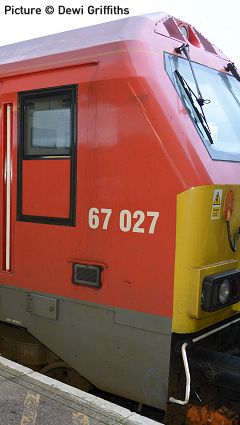
This list may be out of date if you are reading an archived page. For the current list visit our Calendar.
January 2015
Thursday 29 January 2015 Merseyside Railway History Group Brian Roberts 'Merseyside Connections 1973 - 85'
Friday 30 January Great Western Society North West Branch 50 Years of Railway Photography, by Colin Ellis.
February 2015
Friday 6 February Clwyd Railway Circle A Year in the Life of an International Train Spotter: Phil Thomas
Monday 9 February Wrexham Railway Society: Rossett – Saltney Junction Re-doubling: Speaker from Network Rail
Thursday 12 February Llandudno and Conwy Valley Railway Society A black & white circle of North Wales: John Hobbs
Friday 13 February Altrincham Electric Railway Society David Young "A Further Selection of Slides from the Manchester Locomotive Society Collection". Colour Slide presentation.
Monday 16 February RCTS Merseyside & North Wales: Welsh Wanderings in the1980s". Geoff Morris. A trip through Wales in a decade during which livery variations started to appear and steam reappeared on a scheduled basis along the Cambrian & North Wales Coasts.
Thursday 26 February Merseyside Railway History Group Trevor Gauntlett 'The Halton Curve'
Friday 27 February Great Western Society North West Branch Group Annual Meeting
March 2015
Friday 6 March Clwyd Railway Circle Annual General Meeting followed by an illustrated talk entitled Back to the ‘60s by Geoff Coward
Monday 9 March Wrexham Railway Society: A view from a signal box window: Adrian Bodlander
Thursday 12 March Llandudno and Conwy Valley Railway Society A view from a signal box window: Adrian Bodlander
Friday 13 March Altrincham Electric Railway Society John Sloane 'Chinese Steam in the 80s'. Colour Slide Presentation.
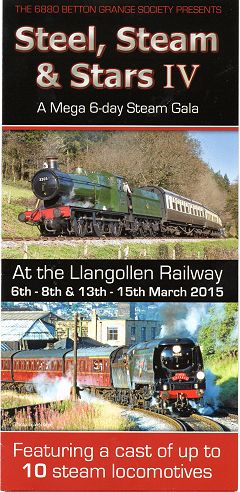
Monday 16 March RCTS Merseyside & North Wales: A History of Railway Preservation in Britain. Robert Gwynne .Bob is the Associate Curator Rail Vehicles at the NRM in York
Thursday 26 March Merseyside Railway History Group AGM Members Slides
Friday 27 March Great Western Society North West Branch Liverpool's Disused Tunnels, by Paul Wright.
April 2015
Thursday 9 April Llandudno and Conwy Valley Railway Society Railway enthusiasm - international: Phil Thomas
Friday 10 April Clwyd Railway Circle The View From a Signalbox Window: Adrian Bodlander
Friday 10 April Altrincham Electric Railway Society Alvin Barker "A Selection of British Transport Films from the Steam Era". Digital presentation.
Saturday 11 April. Excursion. The Great Western Express from Hooton to Worcester and Oxford The railtour is jointly promoted by the Chester Model Railway Club and Ffestiniog Railway Society Dee & Mersey Group. Full details can be found at the Chester Model Railway Club website.
Monday 13 April Wrexham Railway Society: Back to the ‘60s :Geoff Coward
Monday 20 April RCTS Merseyside & North Wales: 21st Century Steam in China. Geoff Coward. Geoff presents video and stills from his visit in 2002.
Friday 24 April Great Western Society North West Branch Standard Gauge Railways of France and Germany, by Barry Rushton
Thursday 30 April Merseyside Railway History Group Geoff Coward Quiz and informal evening
May 2015
Thursday 14 May Llandudno and Conwy Valley Railway Society 6G locomen: personal reminiscences by A Guest Panel
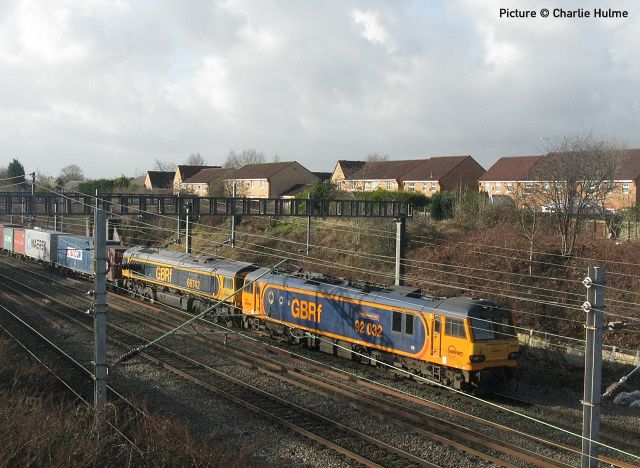
The Felixstowe - Trafford Park container train, diverted through Stockport as part of the arrangements for the engineering work its usual route through Styal, passes Adswood on the approach to Stockport on 24 January. 92 032 IMechE Railway Division is a regular performer on this train; on this occasion 66 742 Port of Immingham is along for the ride. For more Manchester freight, see the Manchester Locomotive Society website.
Loco variety at Crewe - with Darren Durrant
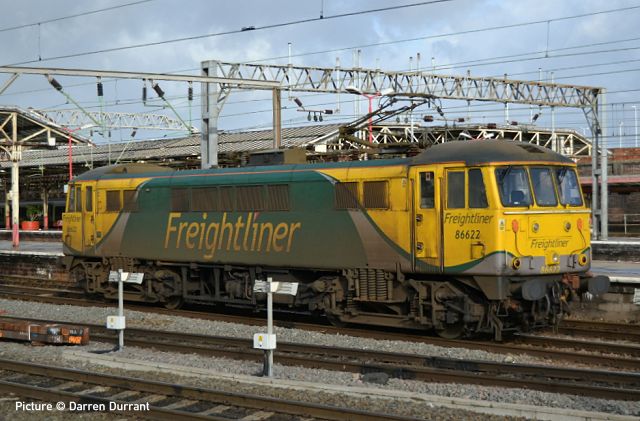
A surprising variety of locomotives seen at Crewe on Saturday 24 January. At the station 86 622 is heading to the LNWR depot.
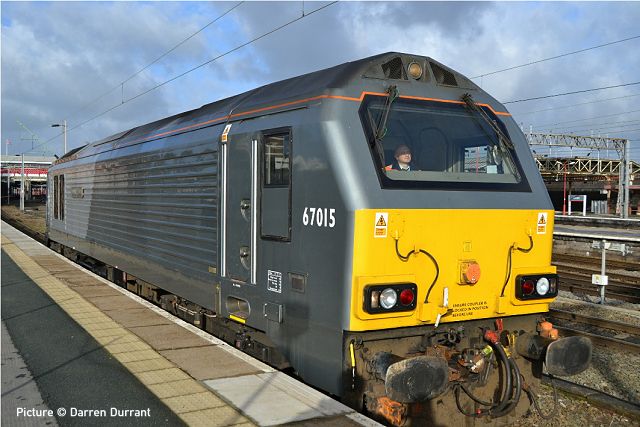
67 015 David J. Lloyd waits at the signal on platform 12 on its way to Cardiff Canton.
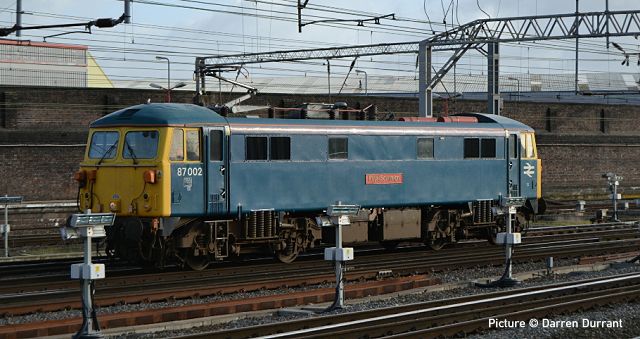
87 002 Royal Sovereign storms down the fast line on its way to Mossend.
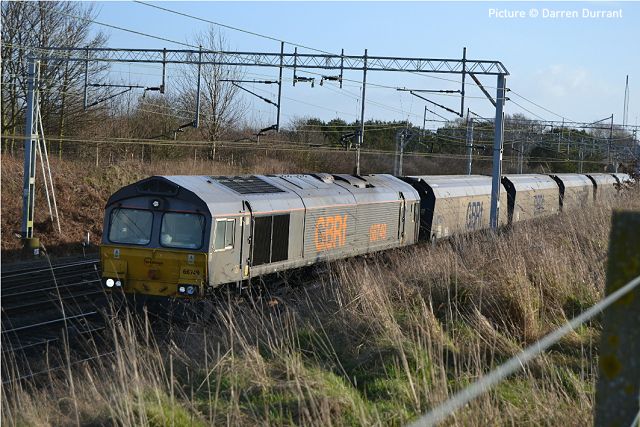
At Casey Lane, 66 749, still in its Dutch livery, heads the biomass empties back to Liverpool.
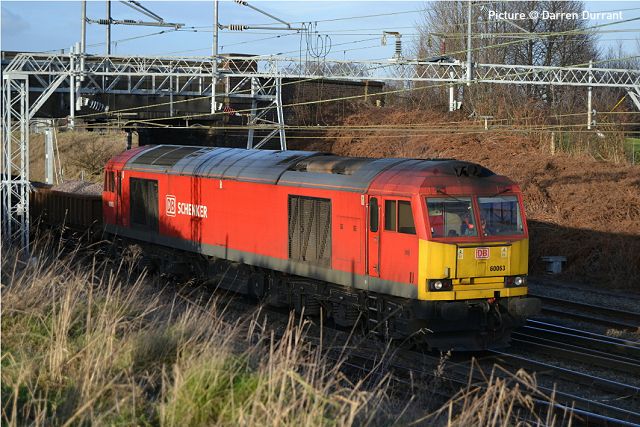
60 063 heads south with a rake of ballast wagons.
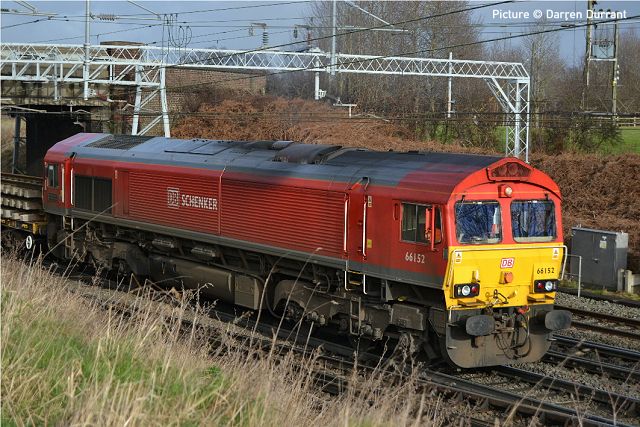
66 152 followed soon after loaded with track panels.

Resting at Crewe platform 8, GBRf 92 032 having returned from Trafford Park (see heading picture).
More Timetable Tribulations
A number of comments have been received regarding our item last issue about the current Arriva Trains Wales timetable.
Regarding the claim by politicians to have 'reversed' Arriva's removal of an important morning peak connection from Llandudno to Manchester, it's been pointed out to us that the 05:54 train from Llandudno to Llandudno Junction, connecting with a Manchester train, was proposed by Arriva before any political intervention, and that there was in fact little option but to provide a train at 05:54 to meet the 'Service Level Commitment' required by the Department for Transport regarding the number of trains required to serve Llandudno; along with the 20:08 and 21:11 shuttles to Llandudno Junction, this replaces the former departures at 12:08, 12:44 and 19:13.
Another aspect of the changes, which has not been mentioned here before, is the effect on the service between Crewe and Chester. For most of the day there is a 30-minute interval service – the Arriva Trains Wales shuttle alternating with the Virgin London service. However, the new timetable has disrupted this arrangement by re-timing the 07:23 departure from Crewe, leaving train departures from Crewe to Chester at 06:54, 07:11 and 08:23. Thus, in the midst of the morning rush hour there is a 72-minute gap between departures. The old 07:23 offered a connection from at Crewe from the 06:43 Manchester to London Euston service which arrives in Crewe at 07:15; this was particularly useful for passengers from Stockport and Wilmslow.
The new 07:11 from Crewe to Chester is the first outing of the day for the new loco-hauled set; it needs to run at this time in order to form the 07:38 Chester to Manchester Piccadilly. Manchester trains normally depart Chester at xx.50 or xx.52, to arrive at Manchester Piccadilly in Arriva's allocated 'slot' on the busy Deansgate - Piccadilly section. It seems that the loco-hauled service is expected to make slower progress than a Class 175 railcar set, so has to start earlier from Chester. You might think that a 3300 HP loco pushing just five coaches would be quite 'nippy', but maybe time has to be allowed for opening and closing the 'slam' doors?
Thanks to Mike Stone and Tim Grady for help with this item.
Manchester Cityscapes - pictures by Charlie Hulme
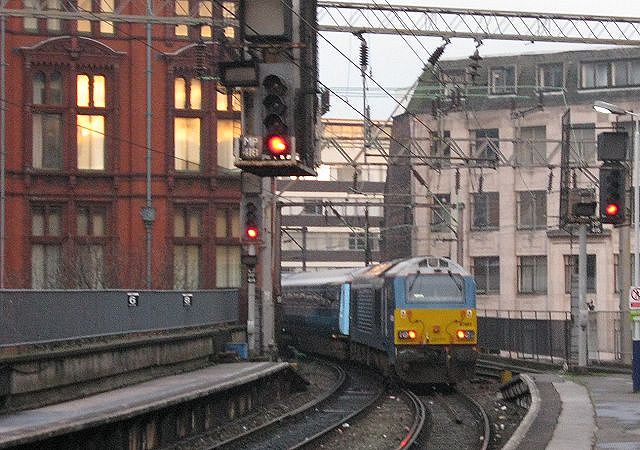
Two Arriva views at Manchester Oxford Road on 22 January. Above, the setting sun reflects in the windows of the former Refuge Assurance building at 15:50 as 67 001 pushes on towards Piccadilly with the 13:01 from Holyhead, having run non-stop through Oxford Road as scheduled. It is clear that the planned widening of the line to four tracks through Piccadilly cannot reach as far as Oxford Road, so a two-track bottleneck will remain.
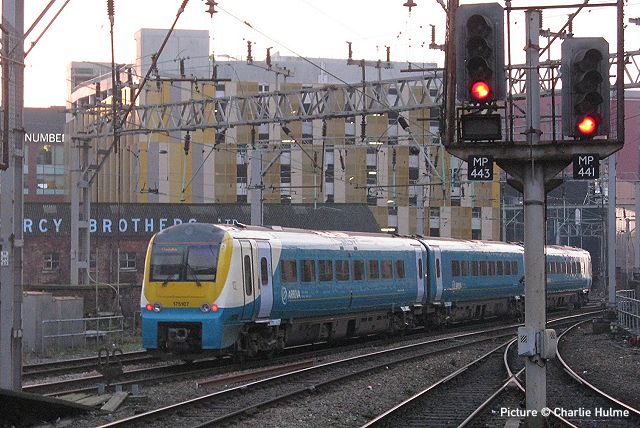
Minutes later, the 15:50 Manchester Piccadilly - Llandudno departs from Oxford Road formed of 175 107. The new building behind is part of the First Street North development, contrasting with the old Percy Brothers Hotspur Press printing works, which closed in 2011 but is still in partial use by an 'artist collective and design studio' The railway scene here is planned to change dramatically, with the platforms extended along the viaduct to allow 8-car trains to call. To achieve this, the line to bay platform 5, seen bottom right, will be abolished. Read all about the plans on Network Rail's site.
Compass tours continue
As reported previously, the 'Compass Tours' operation is now a brand of West Coast Railways, to be known as 'Compass by West Coast'. The company has now issued an ambitious programme of 50 trains for 2015 on a dedicated website at www.compassrail.co.uk which includes some very interesting ideas. Included in the next few months are Hooton to Portsmouth on 11 April, Chester to Whitby on 13 April, Holyhead to Windsor on 15 April, and Chester to Penzance on 20 May. Later in the year there are several incoming excursions to the Conwy Valley line. We wish them every success.
On-line booking is provided on the website.
Another Push-Pull measurement train
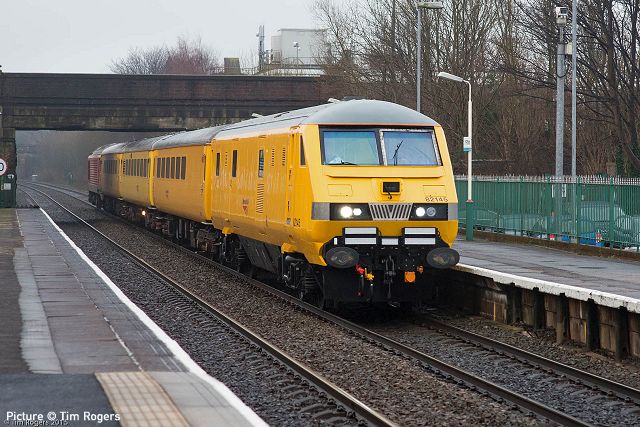
On 21 January (above) Network Rail track recording train 1Q30, 10:55 Derby Rail Technical Centre to Crewe via Holyhead, passes Flint westbound, formed of Mk3 Driving Van Trailer 82145, Plain Line Pattern Recognition vehicle "PLPR4" 72639, Network Rail Track Inspection Coach 2 "TIC2" 977974, Plain Line Pattern Recognition vehicle "PLPR2" 5981 ...
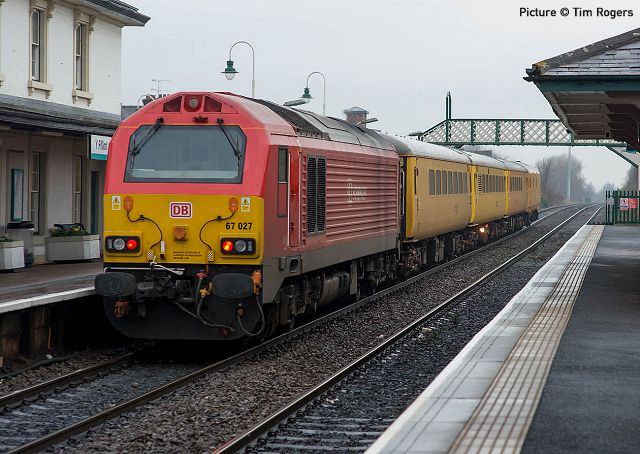
... and DB Schenker loco 67 027. Pictures by Tim Rogers.
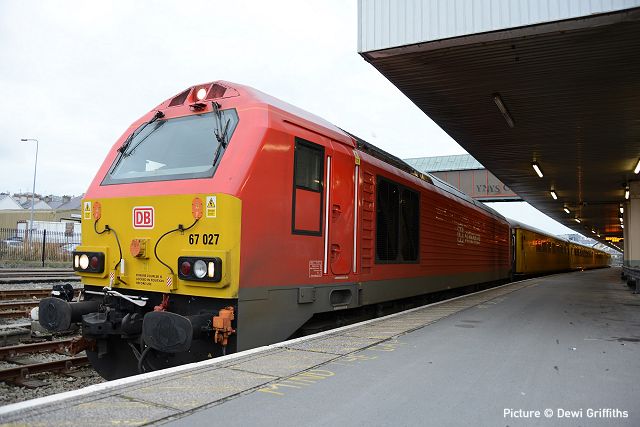
Awaiting the return journey in Platform 1 at Holyhead. The train paused here from 15:17 to 16:12.
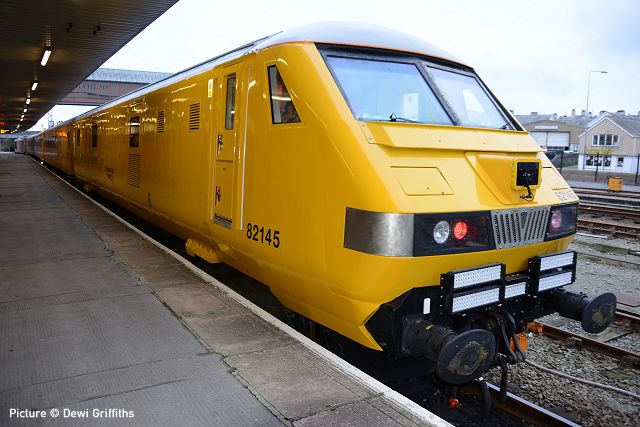
82145, formerly a Virgin Trains vehicle, looks in sparkling condition. Use of Class 67s and a 125 mph- capable DVT allows running at higher speeds than the Class 37 and Mk2 driving vehicle formation as featured in the last issue. Note the camera housing in the nose, complete with 'windscreen wiper'.
Cheshire in the 1950s - pictures by Norman Jones
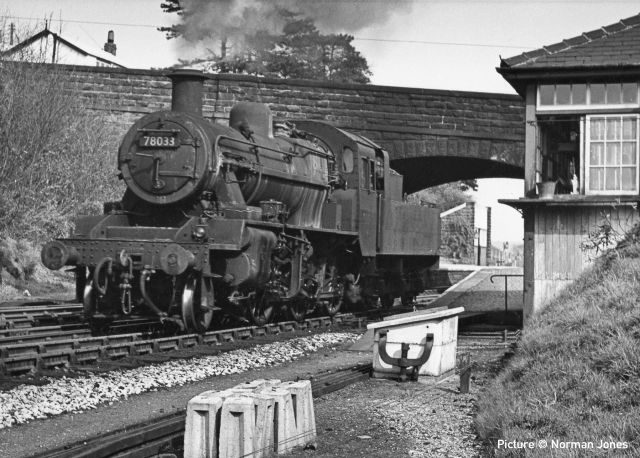
Our contributor Tony Robinson is custodian of a collection of pictures donated by late Norman Jones (1918-2003) - author of a number of fine railway books for Foxline and other publishers - with instructions to 'use as you wish', so we'll present a selection of previously-unpublished ones here. All were taken in the 1958-61 period; Anthony has provided caption to which we have added some additional details. Above, British Railways standard Class 2 2-6-0 78033 stands alongside Mouldsworth Junction signalbox, perhaps awaiting instructions from the signalman, with Mouldsworth station behind. Is that a rail-bending device leaning against the concrete bin?
This Cheshire Lines signalbox survived in use until the mid-2000s, but lost its main purpose when the line towards Helsby was taken out of use and has since been demolished.
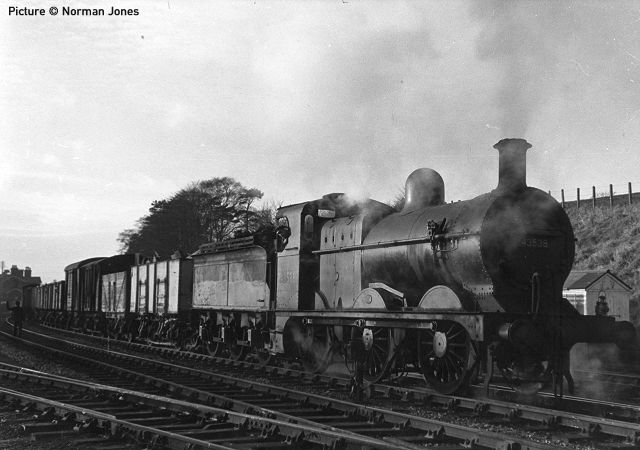
Mouldsworth: Johnson 3F 0-6-0 43538 shunts a Northwich bound pick-up freight. The 21-ton mineral wagon seems to be loaded with scrap metal. The shunter can be made out on the left, making a hand signal to the guard, while the driver seems to be keeping an eye on the photographer. The train is on the main line, with the station in the background; the tracks in the left led to the goods yard, closed a few years later, and in recent times transformed into a housing development.
This veteran locomotive entered service with the Midland Railway in 1897; at the time of the photograph it was based at Northwich shed, until transferred in January 1959 to Buxton, only to be withdrawn from service at the end of that year. 63 years is a long lifetime, although some of the diesel locos running today are well into their 50s.
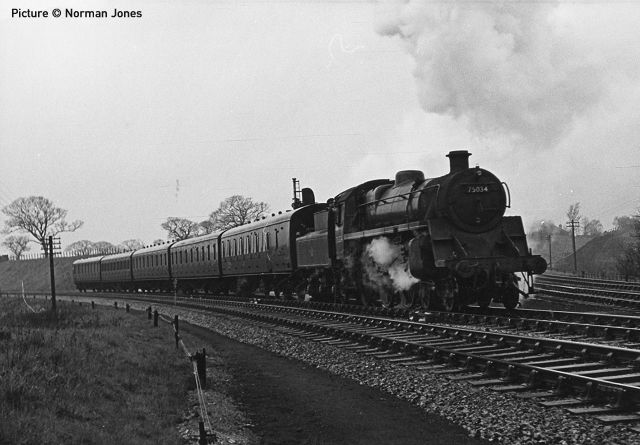
By contrast, BR Standard Class 4 75034 was nearly new in this circa 1959 picture, having been built at Swindon in 1953. The train from Chester Northgate approaches Mouldsworth Junction with a typical pre-diesel days consist of non-corridor suburban stock of assorted parentage, heading for Manchester Central. To the right is the line to Helsby, which was the only route here from 1869 until the line to Chester opened in 1875.
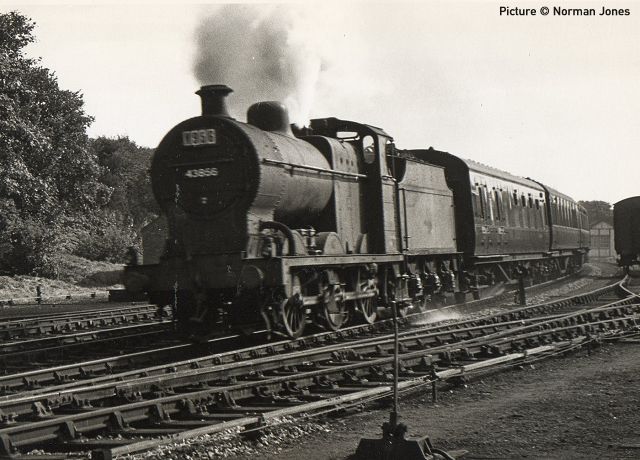
Fowler 4F 0-6-0 43856 passes Mouldsworth goods yard and approaches the station with what is probably a Sunday excursion: can anyone supply details? The locomotive was allocated to Nottingham shed from 1958 to 1961.
In the distance is the small signalbox-like building, which we believe to be 'Mouldsworth Yard Frame' which contained operating levers for the connections at the end of the goods yard, remote from the junction signalbox. Redundant when the goods yard closed in the 1960s, it somehow found its way to a garden near Maidenhead in the Thames valley where there was a 5-inch gauge garden railway. In 2007, following the death of the owner, it was transferred to the preserved Chinnor and Prices Risborough Railway, where it has been fully restored: the story is told on the C & PR website.
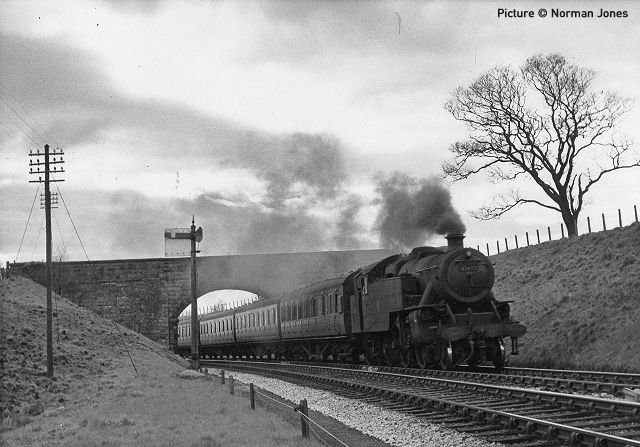
Fairburn 2-6-4T 42675 of Trafford Park shed, with another typical passenger train for the line, passes Mouldsworth Junction's down outer starting signal, a typical Cheshire Lines Committee lower-quadrant signal. Note the neatly-tended track, and lack of undergrowth on the cutting sides from the days before machines took over track maintenance.
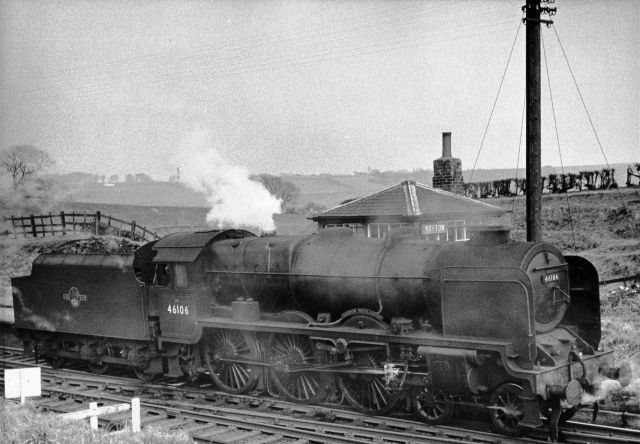
Finally, a view at Norton, between Warrington and Chester on the 'Birkenhead Joint' line. The loco is the only 'Royal Scot' fitted with British Railways-style smoke deflectors (in 1954, apparently as an experiment): 46106 Gordon Highlander. Note the ancient signalbox, in the early style of contractors Saxby & Farmer. It was replaced in 1972 by a London Midland Region standard 'Type 15' box which still retains the name 'Norton' even though the station, closed in 1952, re-opened in 1983 in a slightly different position as Runcorn East.
Help wanted
Recent emails have included some requesting help from our readers in researching North Wales topics.
Geoffrey Barnes has embarked on a interesting project to relate in book form all the train movements at Llandudno Junction on a typical 1950s Saturday, 27 July 1957. We have obtained, with thanks to some kind people, Working and Public Timetables, as well as the Special Traffic Notice for that weekend, but it would be interesting to hear from anyone who has, or knows of, pictures, notes or memories from that day. Please contact us if you can help.
Christian Roberts is making a model based on Tal-y-Cafn station set in the 1970s/80s period, and wonders of anyone could help with pictures of the station and its immediate surroundings in those decades. We've already has some help with this from members of the Llandudno and Conwy Valley Railway Society, but does anyone have pictures showing the Auction House and/or the newsagent's shop adjacent to the station?

A modeller we have recently been able to help with details of ballast hoppers is Anthony Ashley who is building the North Wales Coast line through Conwy, Penmaenmawr and Bangor in N scale at his home in Australia. Anthony has sent us a picture (above) illustrating his progress so far. The building of 'Welsh Dragon Rail' is chronicled with frequent updates in a blog hosted on the RMWeb forum.
The Flying Bufferbeam
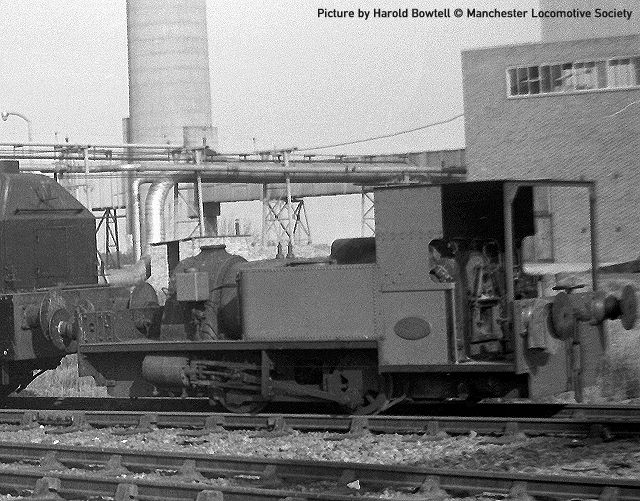
Harold Bowtell took this picture at Courtauld's factory in Grimsby in October 1962. The locomotive was built by Peckett's of Bristol in 1936, their works number 1900, for work at the Courtauld's plant in North Wales near Holywell Junction. When built it did not have the improvised cab sides and roof seen here, which were added at Grimsby, it was built to haul wagons of waste from the Rayon-making process through a very low bridge under the North Wales Coast main line. However in 1954 it was ruled that the operation was too dangerous and the loco was transferred away.
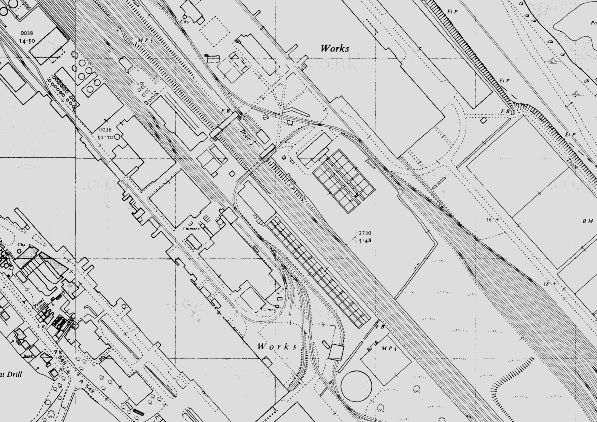
This plan dated 1963 shows what appears to be the bridge in question. The Courtauld's installations in Greenfield were a major employer in the area, and a customer of the railway, until closed down in phases in the 1970s and 80s.
Happily the little loco is now preserved at the Buckinghamshire Railway Centre, Quainton Road, and has been overhauled and returned to its original condition with no cab: here is a link to a photograph taken there. Are there any photographs of it in use in North Wales, or is it 'one that got away'?
Thanks to Ivor Bufton for bringing this to our attention.
Southern Sojourn - with Peter Dickinson
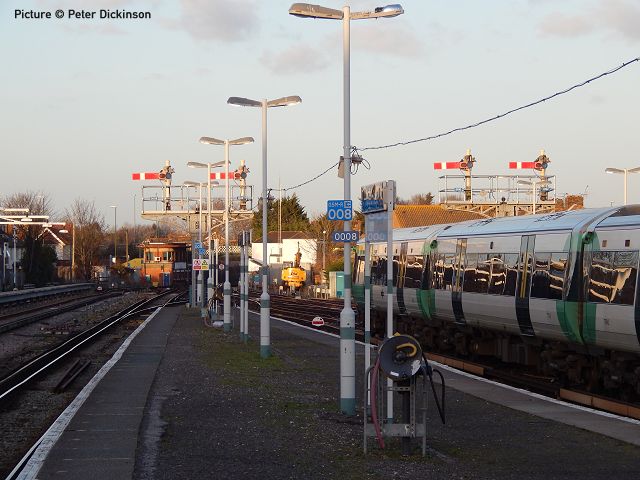
Something completely different: a small selection of photographs taken at Bognor Regis and nearby Barnham on the south coast, which may be of interest. Traditional semaphore signalling controls the station throat at Bognor Regis (above) and it is refreshing to see this still in action.
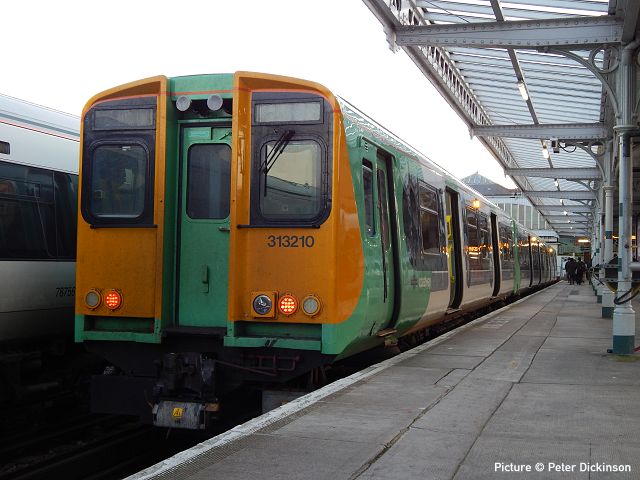
Vintage Class 313 units operate along the South Coast.
A branch line serving Bognor opened in 1864 and left the main Brighton to Portsmouth line at Barnham Junction. Opened 1st June 1864, Bognor station was originally a small wooden single storey building which was severely damaged by strong winds in March 1987. A subsequent fire two years later destroyed what remained of the station. Between 1900 and 1902 the current station, complete with red brick buildings and extensive sidings were built at a cost of £68,000. The town gained its 'Regis' title by royal decree in 1928 after King George V recovered from an illness whilst staying there.
The surviving signal box controlling the station site is a Southern Railway Type 13 design built in 1938 and contains 66 levers.
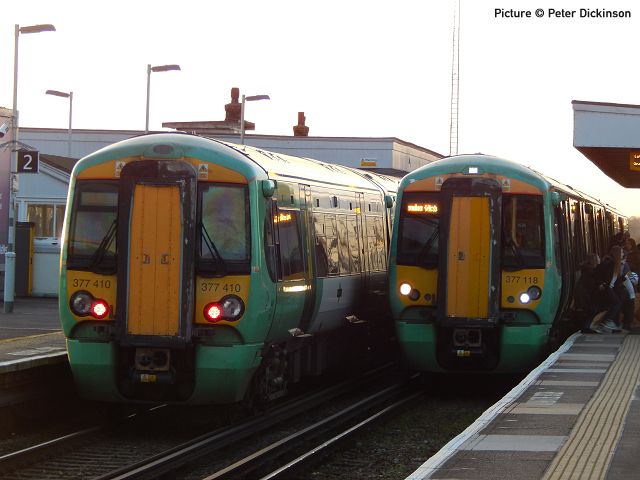
A pair of Class 377 'Electrostar' units at Barnham.
North Wales Coast home page | Archive | Previous Notice Board